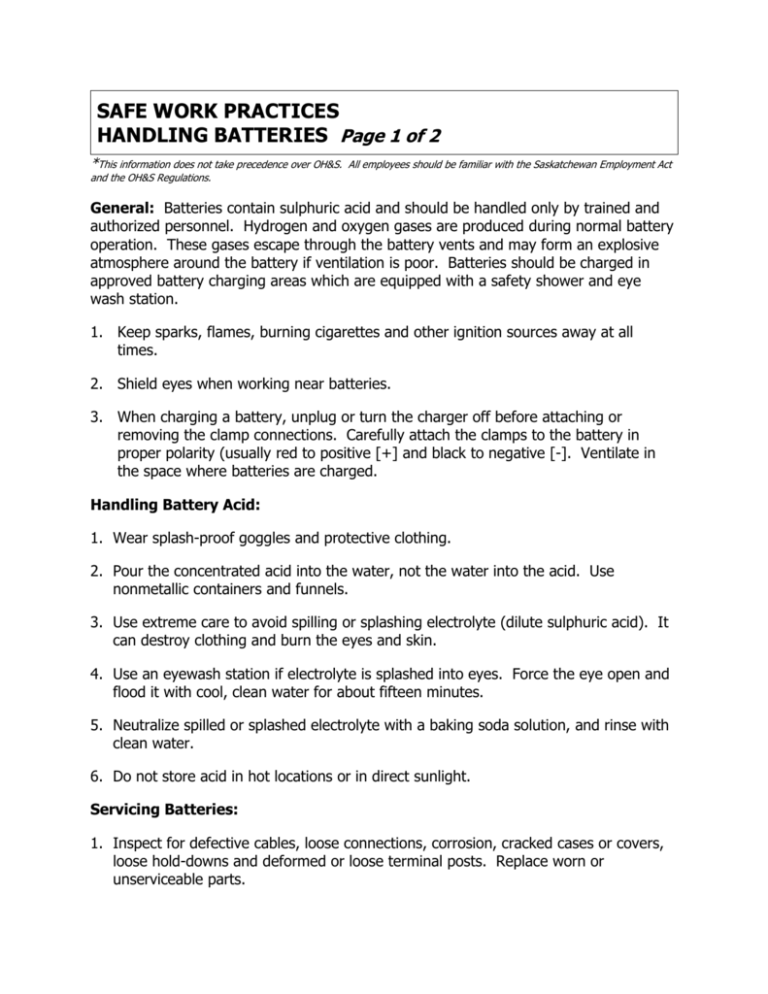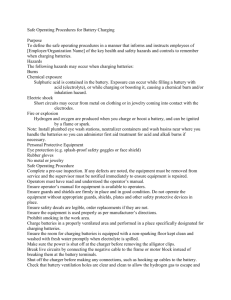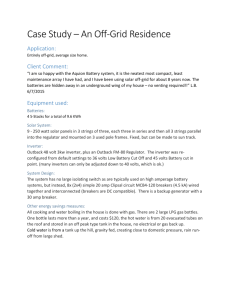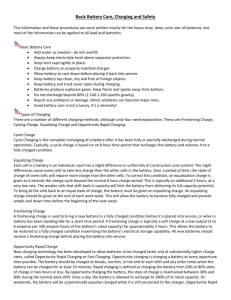Handling Batteries - Motor Safety Association
advertisement

SAFE WORK PRACTICES HANDLING BATTERIES Page 1 of 2 *This information does not take precedence over OH&S. All employees should be familiar with the Saskatchewan Employment Act and the OH&S Regulations. General: Batteries contain sulphuric acid and should be handled only by trained and authorized personnel. Hydrogen and oxygen gases are produced during normal battery operation. These gases escape through the battery vents and may form an explosive atmosphere around the battery if ventilation is poor. Batteries should be charged in approved battery charging areas which are equipped with a safety shower and eye wash station. 1. Keep sparks, flames, burning cigarettes and other ignition sources away at all times. 2. Shield eyes when working near batteries. 3. When charging a battery, unplug or turn the charger off before attaching or removing the clamp connections. Carefully attach the clamps to the battery in proper polarity (usually red to positive [+] and black to negative [-]. Ventilate in the space where batteries are charged. Handling Battery Acid: 1. Wear splash-proof goggles and protective clothing. 2. Pour the concentrated acid into the water, not the water into the acid. Use nonmetallic containers and funnels. 3. Use extreme care to avoid spilling or splashing electrolyte (dilute sulphuric acid). It can destroy clothing and burn the eyes and skin. 4. Use an eyewash station if electrolyte is splashed into eyes. Force the eye open and flood it with cool, clean water for about fifteen minutes. 5. Neutralize spilled or splashed electrolyte with a baking soda solution, and rinse with clean water. 6. Do not store acid in hot locations or in direct sunlight. Servicing Batteries: 1. Inspect for defective cables, loose connections, corrosion, cracked cases or covers, loose hold-downs and deformed or loose terminal posts. Replace worn or unserviceable parts. SAFE WORK PRACTICES HANDLING BATTERIES Page 2 of 2 2. Tighten cable clam nuts with the proper size wrench. Avoid subjecting battery terminals to excessive twisting forces. 3. Use cable puller to remove a cable clamp from the battery terminal. 4. Remove corrosion on the terminal posts, hold-down tray and hold-down parts. Use a tapered brush to clean battery terminals and the cable clamps. 5. Clean dirt from the battery with a cloth wetted with ammonia or baking soda solution. 6. Use a battery carrier to lift a battery, or place hands at opposite corners. 7. Use self-leveling filler which automatically fills the battery to a predetermined level. Battery cells should never be filled above the level indicator. 8. Do not squeeze the syringe so hard that the water splashes acid from the cell opening.








